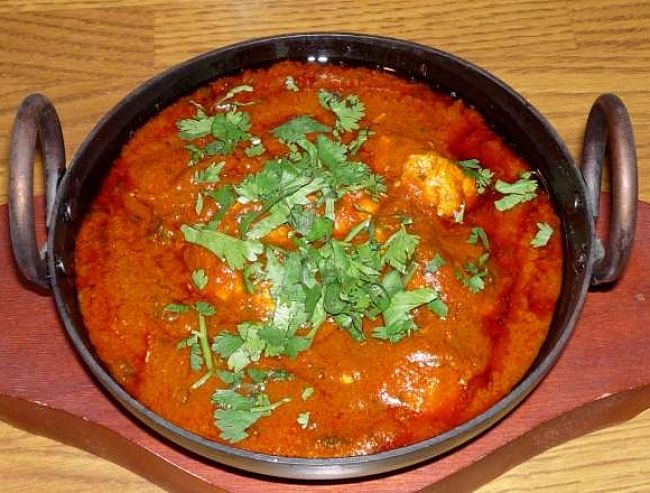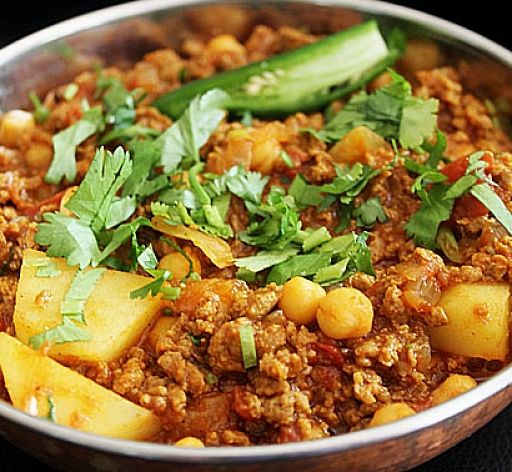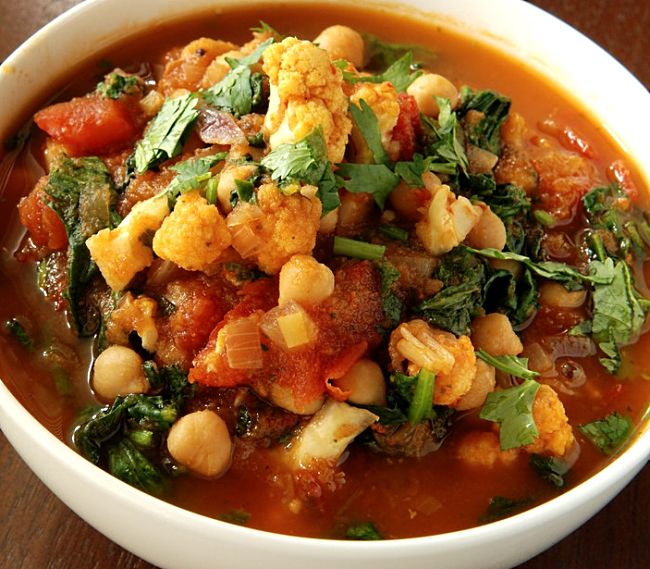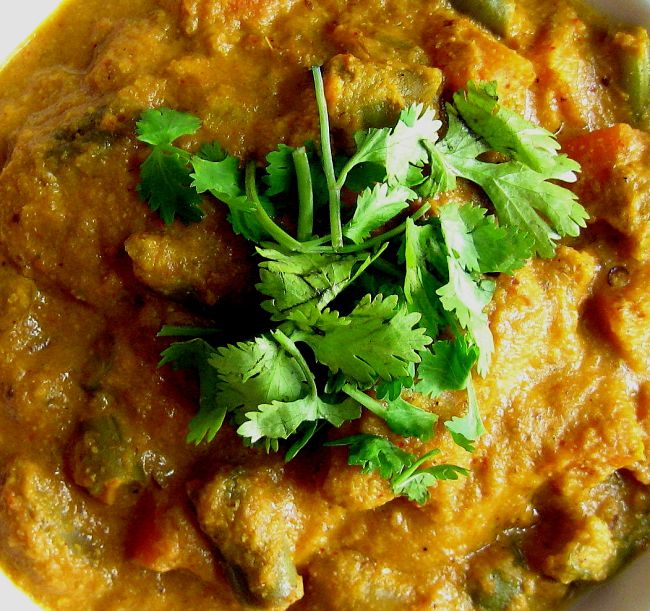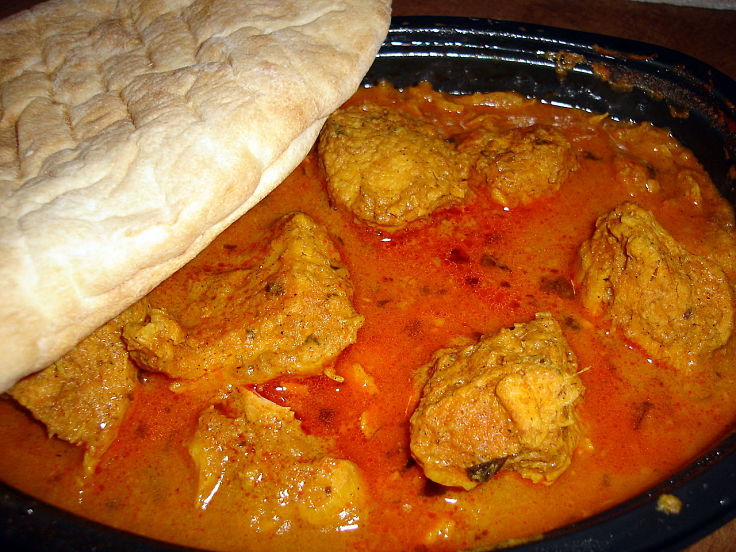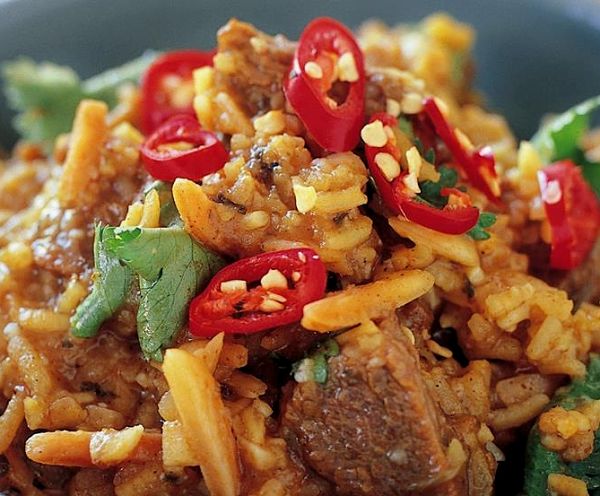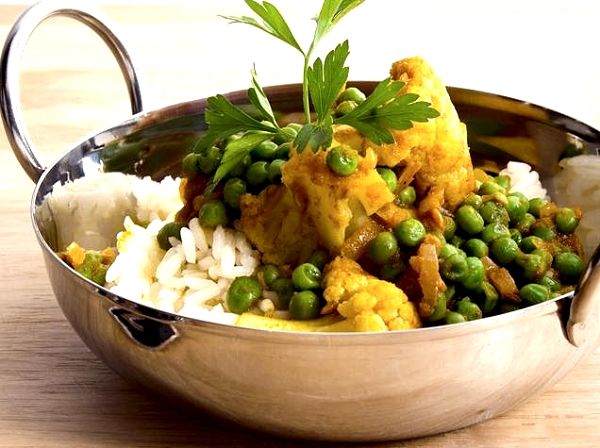Best Balti Recipe Collection - Chicken, Beef, Pork, Vegetables
Balti is a type curry cooked in type of wok and served in thin, mini-wok metal bowls with handles called "Balti bowls". The dish is popular in many restaurants and pubs throughout the United Kingdom, where it is sometimes served over a bed of potato chips. Balti curries are cooked quickly using stir-fry techniques over high heat rather than being slowed cooked. The traditional Balti sauce includes garlic and onions and an array of spices including coriander, turmeric and garam masala. One theory about the origin of this style and style of cooking is that it originated in Baltistan in northern Pakistan which borders on China. In this region cast iron wok, similar to the traditional Chinese wok, is used for cooking. Balti restaurants are popular in Birmingham where they are known as 'Balti Houses'. There are many Balti houses in Ireland, New Zealand and Australia. You can enjoy authentic Balti dishes in your own home using the delightful collection of recipes shown below. Unlike other curries, Balti can be made quickly and easily.
Homemade Chicken Keema Aloo Balti Recipe
Ingredients
- Salt to taste
- 1 teaspoon turmeric
- 1 teaspoon ground cumin
- 1 tablespoon garam masala
- 1 teaspoon red chilli powder
- 1 tablespoon coriander powder
- 3 ripe tomatoes, finely chopped
- 1 small bunch chopped coriander
- 2 green chillies, finely chopped
- 800 g (12 oz) lean minced chicken
- 100 ml grape seed or rice bran oil
- 3 onions, peeled and finely chopped
- Freshly ground black pepper to taste
- 1 tablespoon fresh ginger, finely chopped
- 1 tablespoon fresh garlic, finely chopped
- 2 potatoes, peeled and sliced into small cubes
Method
Heat the oil in a Balti pan or wok over moderate heat. Stir-fry the chopped onions for about 5 minutes until soft and translucent. Add the ginger, green chilli and garlic and fry for 2 minutes. Mix in the coriander powder, garam masala, and cumin powder and add the chicken mince, stirring to combine well. Add the tomatoes, potato pieces, turmeric and chilli powder. Cover the pan and simmer until the potatoes are cooked through. Finally, mix in the fresh coriander and season with salt and freshly ground black pepper. Serve immediately.
Balti Chicken Breast Recipe for One
Ingredients
- Salt to taste
- 1 teaspoon cumin
- 1 tomato, chopped
- 1 teaspoon paprika
- 1 teaspoon turmeric
- 1/2 teaspoon garam masala
- 1 teaspoon dried Fenugreek
- 1 small onion, finely chopped
- Freshly ground black pepper to taste
- 1 chicken breast, cut into small cubes
- 2 tablespoons grape seed or rice bran oil
- 1 tablespoon fresh ginger , finely chopped
- 1 tablespoon fresh coriander, finely chopped
- 2 small chillies, finely chopped (red or green)
Method
Heat a balti, wok or frying pan over moderate to high heat. Add the chopped onion and stir-fry until translucent and tender. Add the chopped tomatoes and fry for 2 minutes, and then add the garlic, turmeric, paprika, chillies and ginger and fry again for 2 minutes. Then add the chicken pieces to the pan and fry until the chicken starts to brown. Pour in 1 cup of chicken stock or water and season with salt, freshly ground black pepper, cumin, garam masala and dried fenugreek leaves. Bring the mixture to the boil and then reduce the heat and simmer until the chicken is cooked right through, adding extra liquid if required, but it should be quite thick. Then, add the fresh coriander and serve immediately.
Quick, Simple and Healthy Chicken Balti Recipe
Ingredients
- 1 cinnamon stick
- 1 teaspoon paprika
- 250 ml tomato puree
- 1/2 teaspoon turmeric
- 3 cardamom pods, split
- 1 teaspoon ground cumin
- 1 teaspoon garam masala
- 1/2 teaspoons cumin seed
- 1 tablespoons lime juice
- 1 teaspoon ground coriander
- 1 small to medium green chilli
- 1/4 teaspoon hot chilli powder
- 1 medium tomato, finely chopped
- 1 medium onion, coarsely grated
- 85 g (3 oz) baby spinach leaves
- 2 cloves of garlic, very finely chopped
- 1 1/2 tablespoons sunflower or groundnut oil
- 2 1/2 cm (1 inch) piece ginger, finely chopped
- 1 cup fresh coriander leaves, coarsely chopped
- 1 red pepper, with seeds removed cut into small chunks
- 450 g (15 oz) of chicken breast, cut into large cubes
Method
Place the chicken in a medium bowl, with the paprika, chilli powder, lime juice, salt and freshly ground black pepper. Mix well and set aside for the chicken to marinate for at least 15-45 minutes. Heat 1 tablespoon of oil in a wok, Balti pan or sauté pan. Add the cardamom pods, cinnamon stick, whole chilli and cumin seeds, and stir-fry the chicken for about 3-5 minutes to brown the chicken. Add the garlic, onion and garlic and stir-fry for an additional 3-4 minutes. Then add the remaining oil and the chicken and fry for 2-3 minutes, until the chicken is cooked. Add the cumin, turmeric, ground coriander and garam masala and mix well. Then, add the tomato puree and 1/2 cup of water. Lower the heat and simmer for 15-20 minutes, until the chicken is tender and cooked in the center. Mix through the spinach and tomato, and simmer for an extra 2-3 minutes. Serve warm with chapatis or basmati rice, or over fried potato chips (yes this sounds weird, but it works.
Best Ever Spicy and Rich Chicken Balti Recipe
Ingredients
- 1 teaspoon salt
- 4 tablespoons oil
- 1/2 teaspoon sugar
- 1 teaspoon chili powder
- 1 teaspoon minced garlic
- 2 tablespoons single cream
- 3 tablespoons tomato puree
- 2 tablespoons Greek yogurt
- 2 tablespoons mango chutney
- 1 1/2 teaspoons garam masala
- 2 green chillies, finely chopped
- 2 tablespoons chopped fresh coriander
- 4-6 chicken breasts with bones and skins removed
Method
Mix together the garam masala, chili powder, mango chutney, tomato puree, yogurt, garlic, salt and sugar. Add to a hot Balti pan or wok, to which a little oil has been added. Stir-fry for 2-3 minutes, while stirring. Add the chicken and fry until just about cooked and then add the chilies, coriander and cream and cook for several additional minutes. Serve warm with steamed rice or naan bread.
Balti Beef Recipe
Ingredients
- 1 bay leaf
- Salt to taste
- 1/2 teaspoon ground cumin
- 1 teaspoon ground paprika
- 1/2 teaspoon ground turmeric
- 1/4 teaspoon ground cardamom
- 1/2 teaspoon ground coriander
- 2 large onions, finely chopped
- 1 tablespoon ginger-garlic paste
- Freshly ground black pepper to taste
- 2 tablespoons rice bran or grape seed oil
- 14 ounce can (400 g) chopped tomato pieces
- 1/4 teaspoon cayenne pepper or 1⁄4 teaspoon ground red chili pepper
- Fresh cilantro for serving
- 1 large onion, finely chopped
- Naan bread and rice for serving
- 2-3 cloves of garlic, finely chopped
- 2 tablespoons rice bran or grape seed oil
- 2 large red bell peppers, with seeds removed and chopped
- 1 1/2 pounds of boneless beef (such as sirloin or eye fillet), thinly sliced
Method
Prepare the sauce by heating the oil in a Balti pan, deep frying pan or wok over moderate to high heat. Add the onions, garlic and ginger and stir-fry for about 5 minutes, or until the onions are soft and are golden brown in color. Add the tomatoes, cumin, coriander, paprika, turmeric, red chili powder (cayenne), bay leaf, cardamom. Season with salt and freshly ground black pepper and mix to combine well. Bring the mixture to the boil while stirring. Then lower the heat and simmer for about 20-25 minutes. Remove the bay leaf and allow the sauce to cool in a bowl. Next, clean the Balti pan or wok, reheat to moderate-high and add some more oil. Add the garlic and onion and stir-fry for 5-10 minutes. Then add the bell peppers and fry for another 2 minutes. Add the beef and stir-fry for 2-5 minutes, until the beef starts to brown. Then, add the balti sauce and bring the mixture to a boil. Lower the heat and simmer for 5-8 minutes. Adjust the seasoning and add fresh herbs. Serve warm with rice and your choice of Indian bread.
Pork Balti Recipe with Yogurt, Garlic and Ginger
Ingredients
- 200 g butter ghee
- 1/2 cup single cream
- 1/2 cup natural yogurt
- 4 teaspoons curry powder
- 1 teaspoon chilli powder
- 1 cup water or beef stock
- 4 tablespoons tomato puree
- 2 teaspoons turmeric powder
- 1/2 cup onion, finely chopped
- 1 teaspoon whole mustard Seeds
- 3 teaspoons garam masala Powder
- 3 carrots boiled and finely chopped
- 2 small white onions, finely chopped
- 1 tablespoon of garlic, finely chopped
- 1 tablespoon of ginger, finely chopped
- 800 g (1 3/4 lb) lean pork steak, diced
- 1/2 cup fresh coriander leaves , coarsely chopped
Method
Pour the oil into a large saucepan or Balti pan and heat to moderate-hot. Add the whole seeds, garlic, ginger and the chopped onions fry until the onions start to soften. Then, reduce the heat to low and finish cooking the onions until they are golden brown in colour. Add the curry powder, turmeric powder, chilli powder, stir through. Add a little water and fry for several of minutes. Then, add the pork and fry while stirring. Add the carrot, cream, yogurt, tomato puree and mix well. Heat the pan to just before boiling and then lower the heat to a simmer and cook for for 20 minutes, stirring frequently. Finally, add the garam masala and cook for an additional 2 minutes. Then add the fresh coriander leaves and other herbs and serve with rice and Indian bread.
Mixed Vegetable Balti Recipe
Ingredients
- 1 large onion, thickly sliced
- 1 3/4 cups hot vegetable stock
- 2 large carrots, thickly sliced
- 400 g (14 oz) can chopped tomato
- 3 clove of garlic, finely chopped
- 150 g (6 oz) low-fat natural yogurt
- 200 g (7 oz) turnip, sliced into chunks
- 1 tablespoons rice bran or grape seed oil
- 1 apple, peeled, cored and sliced into chunks
- 500 g (1 lb) cauliflower, broken into florets
- 4 tablespoons chopped coriander, plus extra to serve
- 1 medium butternut squash (or similar), peeled and cut into chunks
- 2 cups balti curry sauce (use of the the recipes shown above)
Method
Heat the oil in a Balti pan, wok or deep frying pan. Then, add the garlic, onion and apple and stir-fry for 2 minutes and then lower the heat and simmer gently, stirring occasionally, until the onion becomes soft (about 5-7 minutes). Stir in the Balti curry sauce. Add all the fresh vegetables and tomatoes to the pan, and pour in the vegetable stock. Bring to the boil, and then lower the heat, cover the mixture and simmer for 30-45 minutes. Then, stir the mixture, add some of the coriander can simmer uncovered for an extra 10 minutes, to reduce the volume of liquid. Season with salt and freshly ground black pepper. Serve with dollops of yogurt and extra coriander leaves, over rice and with Indian Bread for dipping into the sauce.
